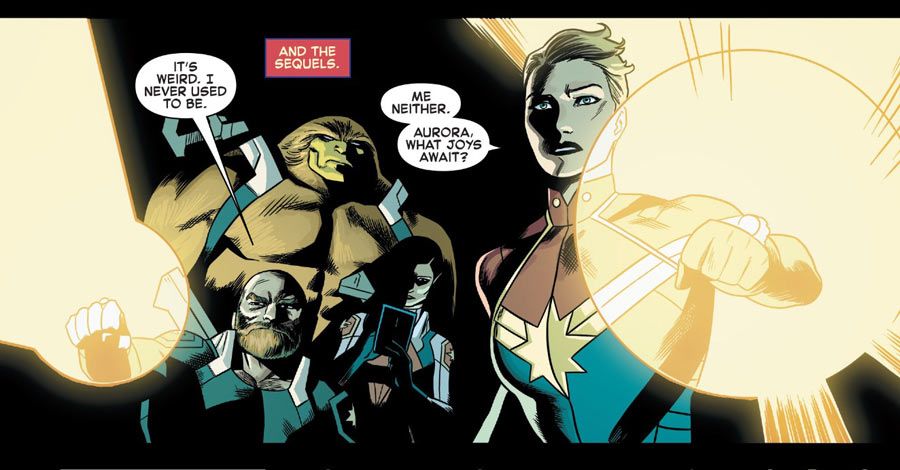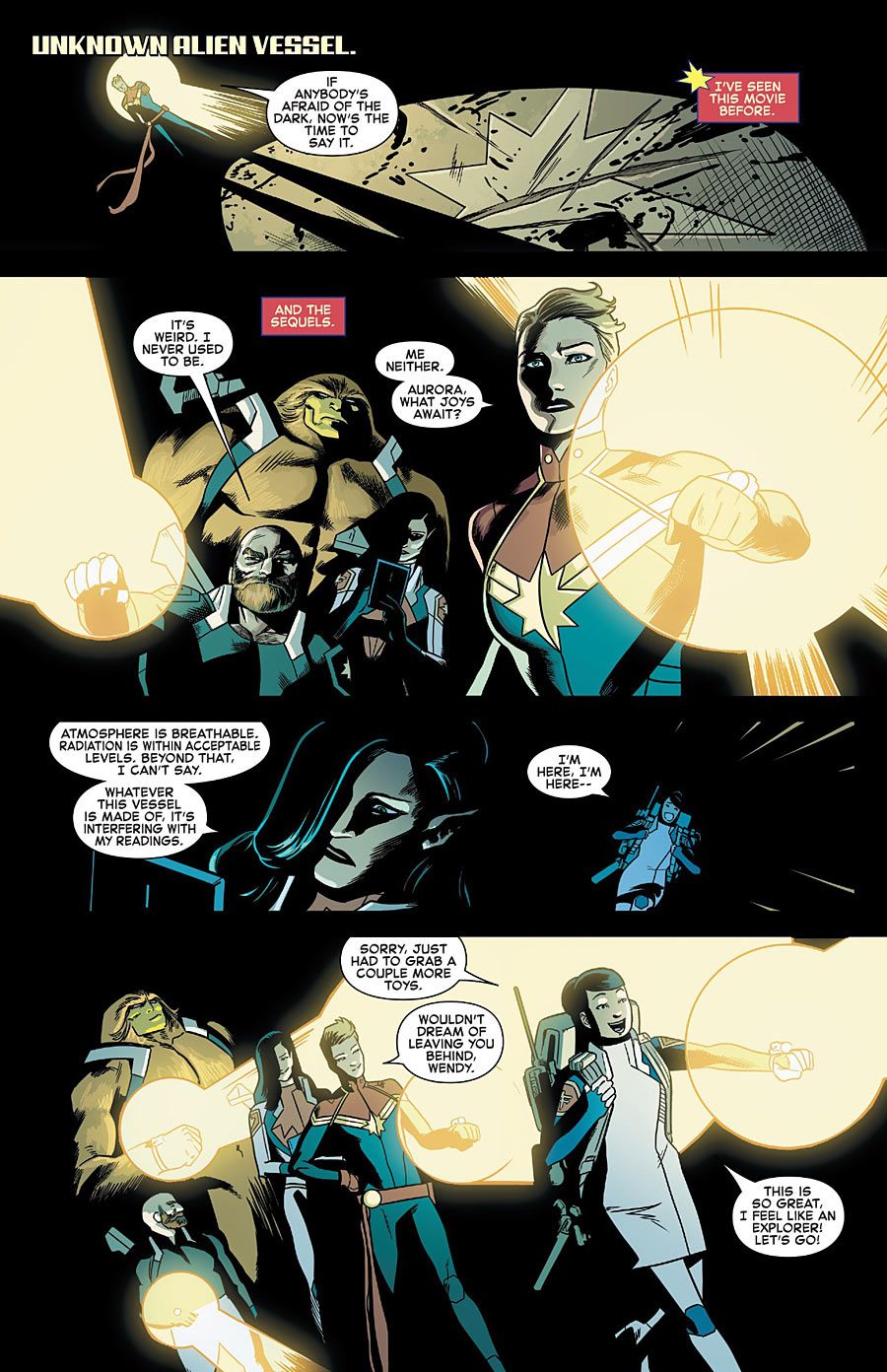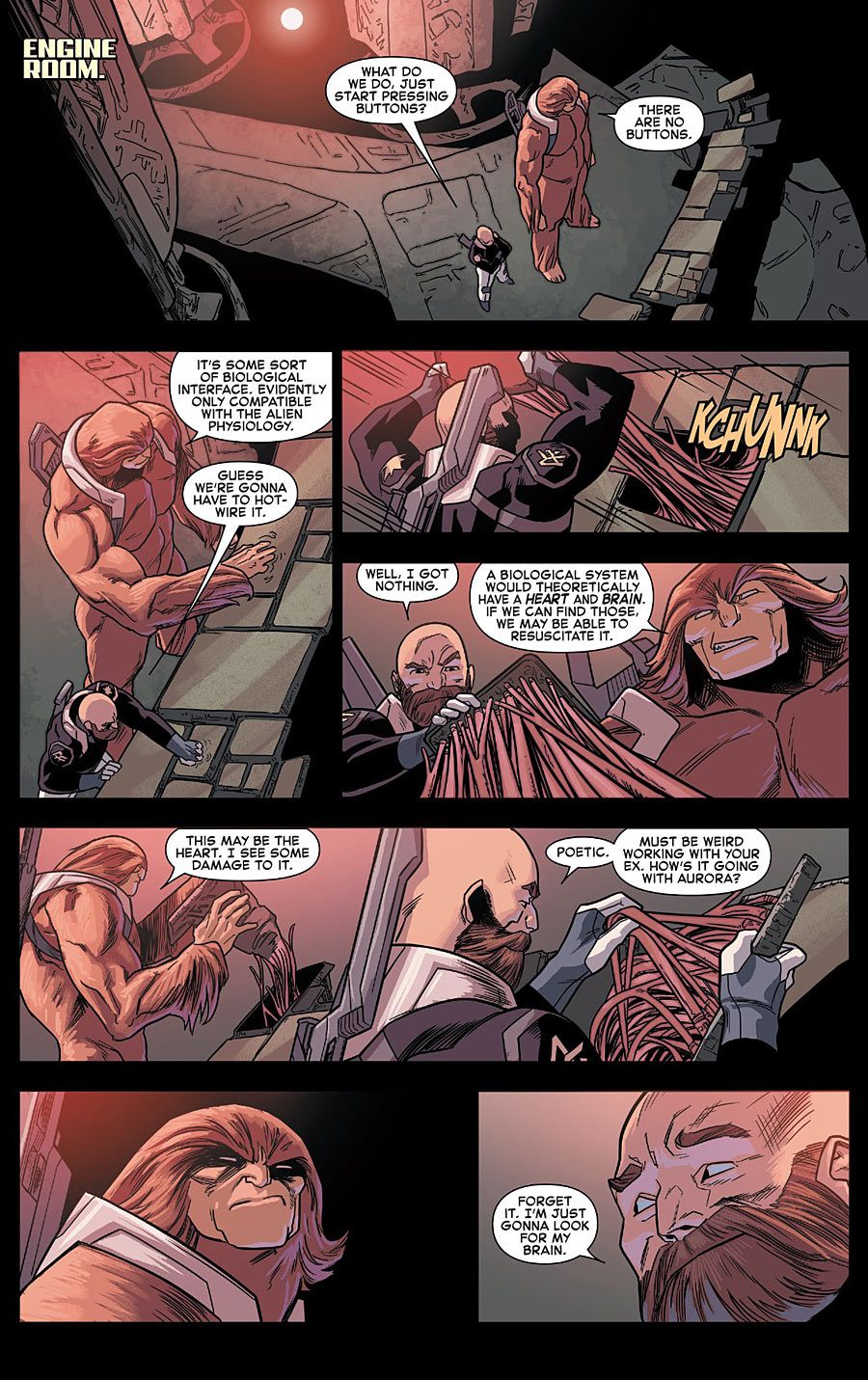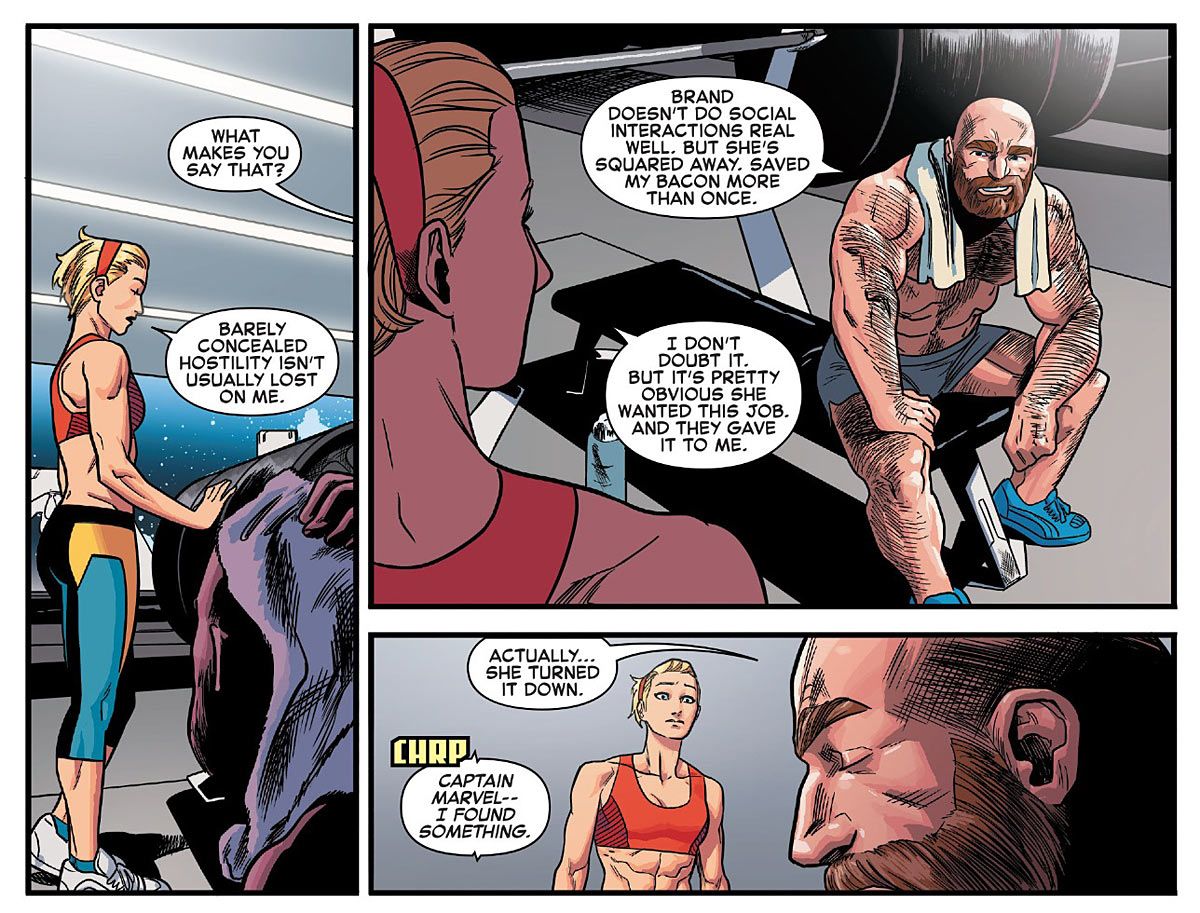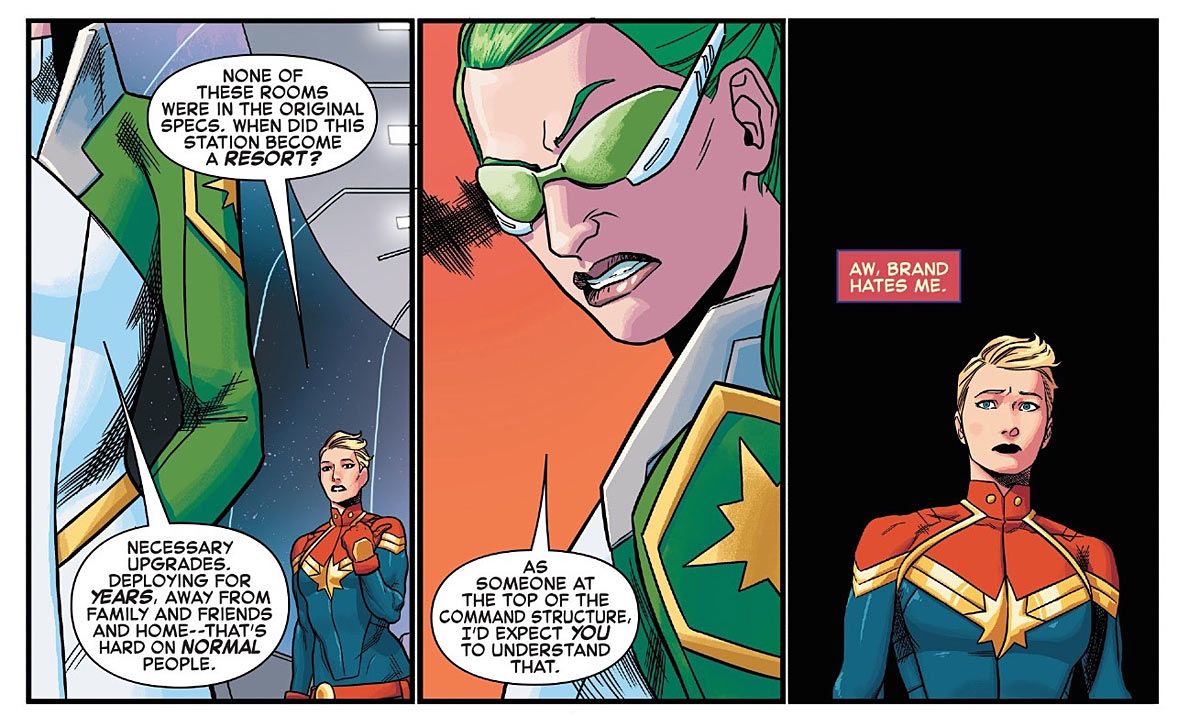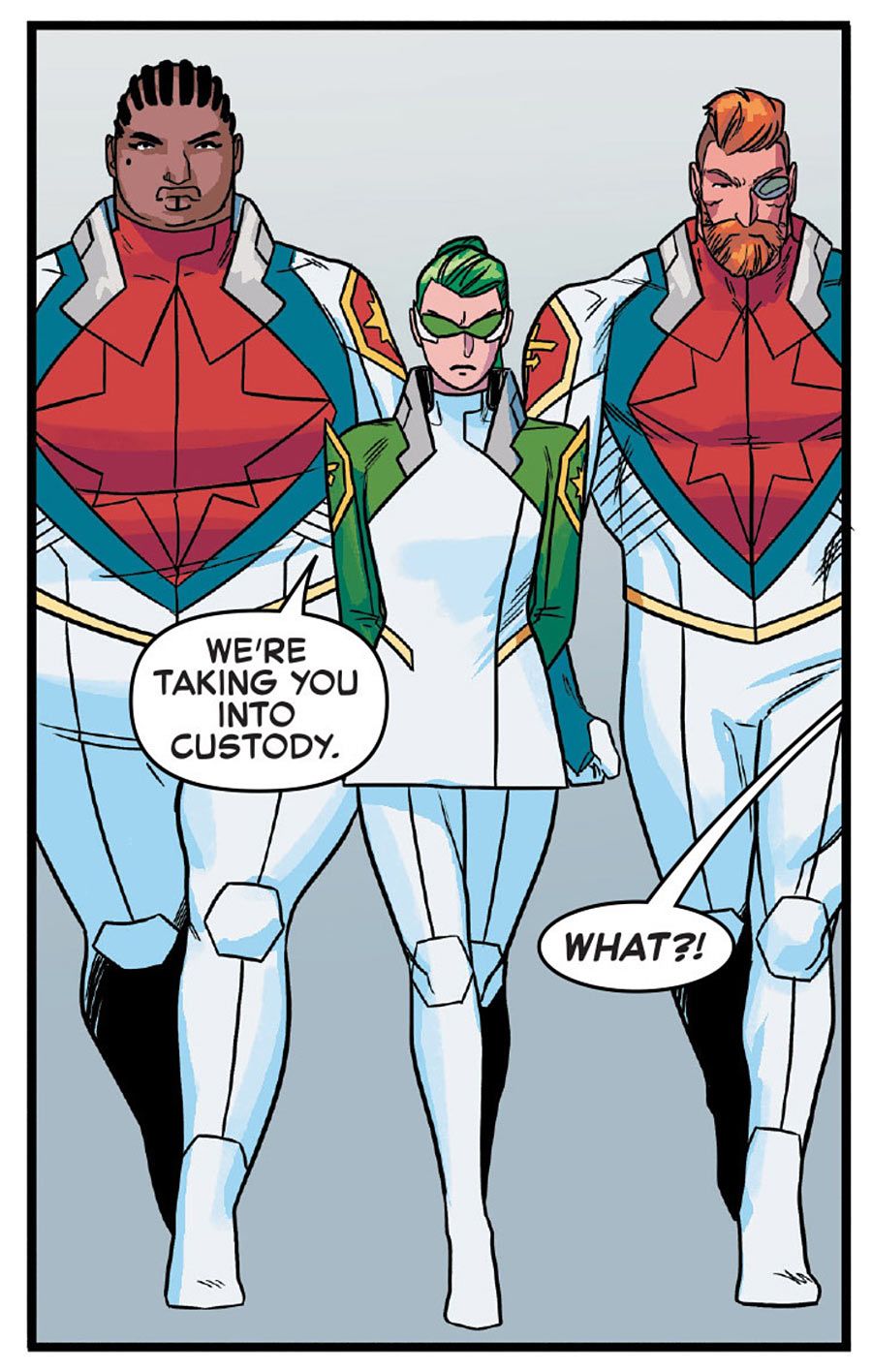Superheroes are created to be shared. That's the one unbreakable rule when it comes to Marvel and DC, that characters belong to the universe and not one specific creator. The creator will eventually move on but the character will remain.
That doesn't mean that a superhero can't become closely associated with a creator. Stan Lee and Jack Kirby knocked out a hundred issues of "Fantastic Four," creating the baseline of the Marvel Universe along the way. Chris Claremont wrote the definitive X-Men to a lot of people, and that association gets even more specific depending on whether you prefer his work with John Byrne, Paul Smith, Jim Lee, etc. Gail Simone on "Birds of Prey," Mark Waid and "Flash (or "Daredevil"), Frank Miller and his Batman bibliography -- creators become tied to characters but those unions can never be permanent.
So when it was announced last summer that Kelly Sue DeConnick would be stepping away from "Captain Marvel," no one should have been really surprised. That's how comics work! But still, even as a longtime reader that's seen other fave characters like the X-Men, She-Hulk and Daredevil go through dozens of writers, I gotta admit I had no idea what to expect with a DeConnick-less "Captain Marvel." With Cap's profile elevated greatly thanks to the work of DeConnick and the artists, editors and fans that made the last few years of stories truly special, and with a feature film in the (further off than I'd like) future, Carol Danvers' profile had finally risen to the point where a new series with new writers would be guaranteed. But... like, what would that be like?
The truth is, while characters always continue on after a significant creator leaves, they don't always do so with back-to-back ongoing series. Only a few Marvel characters get a guaranteed constant spotlight. The X-Men, the Avengers, Spider-Man, Iron Man, Daredevil, Thor, Captain America -- the rosters and secret identities of those characters may change, but it's pretty much a certainty that there will be books with those names in their titles produced every month. It's hard for characters to gain membership into that club. She-Hulk goes years in between ongoings, as do Iron Fist and Luke Cage. Jessica Jones hasn't had a solo series in a decade despite being a Netflix star. Ongoings starring new Marvel movie heroes Ant-Man, Black Panther and Doctor Strange aren't guaranteed either, although that looks to be changing. It's been over 40 years since Black Widow first headlined "Amazing Adventures" and, with the upcoming launch of her new ongoing, it looks like she's finally earned solo-series-staying-power.
Carol Danvers hasn't had it easy. Twenty-seven years passed between the first and second "Ms. Marvel" series, and then she went another two years before headlining "Captain Marvel." Since then, DeConnick remained the constant through 36 issues spread across two ongoing and one limited series. Her work cemented Carol's personality, supporting cast and status quo for a new generation of fans -- many of whom were introduced to superhero comics through "Captain Marvel." DeConnick may not have written as many issues as her predecessor Brian Reed, but the fierce fan response and loyalty the book earned under her watch was unparalleled. Any questions about the character continuing on without DeConnick were quickly answered; a new series was announced barely two days after the writer announced her departure.
So again, with that context out of the way, "Captain Marvel" without DeConnick seemed hard -- but necessary -- to imagine. And, after two issues of the series under writers Michele Fazekas and Tara Butters, artist Kris Anka and colorist Matt Wilson (letterer Joe Caramagna is a "Cap" vet at this point), I'm delighted to say that the book is as heroically punchy and entertaining as ever.
REVIEW: Fazekas, Butters & Anka Take "Captain Marvel" Higher & Further Than Ever Before
The thing is, I actually knew "Captain Marvel" was in good hands after the first issue, that's how thorough of a job the new team did in buzzing higher than my expectations. As the showrunners of "Marvel's Agent Carter," Fazekas and Butters were an inspired choice to handle "Captain Marvel." Like DeConnick did in her previous run, Fazekas and Butters prioritize female friendships, the sense of duty to a larger cause as well as nuanced character interactions and motivations in "Agent Carter." "Captain Marvel" hasn't lost sight of those qualities in the handoff. Watching the stubborn Carol and the hard-as-nails Abigail Brand interact is already a highlight of the new series, and Captain Marvel's inclination to join the Alpha Flight world-defense program feels right in line with the outer space adventures DeConnick previously sent her on. Fazekas and Butters' approach is a great example of if it ain't broke, don't reboot it.
But that's not to say that they haven't made the book their own, because there's also no mistaking this volume of "Cap" from any that have come before. Issue #1 established that Carol's doing a tour of duty on the A.F.S.S. -- the Alpha Flight Space Station. There she'll work as part of Earth's first line of defense against any threats. That's a solid status quo, one that feels right for a hero of Cap's status and it's also one that will provide plenty of material for an ongoing series. It also provides the book with a definitive, unique setting as well as a supporting cast.
And I have talk about the supporting cast, because it really represents what I love about this new book. Like I mentioned, the new "Captain Marvel" doesn't feel disconnected from its recent history, and it also doesn't feel disconnected from the larger Marvel Universe. Instead of being populated with totally new characters, which is a go-to for many writers starting new runs, the book pulls from all over the canon. Carol's back-up team is Alpha Flight -- specifically Aurora, Puck and Sasquatch, three heroes that have been around for about 35 years but receive inconsistent attention. Since Carol's new status quo has her on a space station, the comic utilizes the most prominent space station commander in the MU -- ex-S.W.O.R.D. commander Abigail Brand. And, possibly my favorite move, the series has promoted Wendy Kawasaki (a KSD cast addition) from Cap's personal assistant to Alpha Flight's science officer. Whereas plenty of new #1s almost feel like they're trying too hard to be totally new, usually ignoring what the previous creative team established, it's incredibly exciting to see "Captain Marvel's" fresh start build on what's come before.
Working in serialized television for the past five-plus years has honed Fazekas and Butters into comic-writing machines. The transition from TV to comics can be tough, as TV allows for so much more everything compared to comics' comparatively brief 20 pages, but their first foray into the medium doesn't read like it. The first two chapters of "Rise of the Alpha Flight" are a great example of serialized storytelling; they're each undoubtedly part of a larger story, but each issue has felt like its own thing. This is how "Agent Carter" unfolds every week, with each step towards solving the season-long mystery receiving its own distinct beginning, middle and end.
Fazekas and Butters could have done what previous TV-to-comics writers have done and structured each comic issue to read like an act of one larger episode. They didn't do that, though, and that's what makes this book structurally different from the previous "Captain Marvel" series. Issue one felt like a big budget blockbuster, with Captain Marvel literally punching asteroids to pieces. But issue two took the story into a creepier, more intimate place as Carol's squad investigated a mysterious abandoned spaceship; the parallels with "Alien" were even called out in the issue. While these issues are part of a larger story, they're each standalone explorations of how Carol operates in different settings.
On top of all of this, the book features the crystal clear storytelling and forward-facing style of artist Kris Anka and colorist Matt Wilson. This is superhero comic art of the highest order, with kinetic colors and carefully rendered emotions to savor. The evolution of Anka's linework from his earlier career as a cover artist to now has been something to behold; Anka doesn't skimp on detail, as evidenced by his elaborate shots of the A.F.S.S., but he does so without cluttering up the page. Every line is there for a reason, and your eye goes exactly where the story needs it to go -- and also to the abs. All the abs. Anka's Carol actually looks like a superhero that could punch an asteroid into ash, and I also gotta commend him for turning up Puck's -- yes, Puck's -- sex appeal as well. That's the thing with Anka -- he proves that "sexy" knows no specific body type. From the series leads to the diverse background characters, everyone in this book has a look and they rock the hell out of it. And Wilson is right there, back-to-back with Anka, making every character a unique part of a cohesive whole.
So yeah, "Captain Marvel" is in great hands -- actually, it's in great fists, clenched tightly and ready to obliterate anything that stands in its path towards awesomeness. Getting the chance to keep on after losing a definitive creator can be rare in superhero comics, and thankfully "Captain Marvel" did just that -- and it did it well. Like all the A-List heroes, Captain Marvel can also handle the departure of a definitive creator and keep going without missing a beat. All my worries about Carol Danvers' future are in the rearview mirror, and I'm definitely along for the ride.
Brett White is a writer and comedian living in New York City. He made videos for the Upright Citizens Brigade as a member of UCB1 and writes for the podcast Left Handed Radio. His opinions can be consumed in bite-sized morsels on Twitter (@brettwhite).

